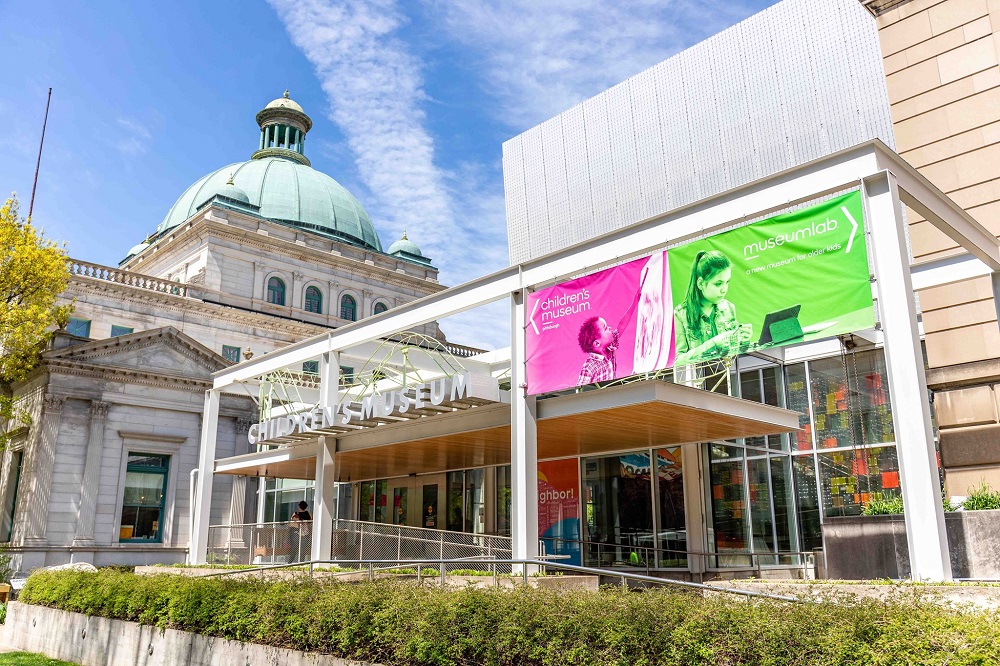
9 things to know about the reopening of the Children’s Museum and MuseumLab
Photo courtesy of the Children’s Museum of Pittsburgh.
After 15 long months of echoing quiet, the Children’s Museum of Pittsburgh and MuseumLab are ready to welcome their noisy patrons. The museums will reopen on Saturday, June 12, with new exhibits, refreshed spaces and more ways for kids to explore their curiosity. June 12 has extra significance for the Children’s Museum: It’s the date of the museum’s debut in 1983.
Museum staffers have been keeping busy planning, creating, building and updating spaces. To keep up with many changes, here is a guide to all you need to know before your visit. As health and safety concerns are alleviated, some details are likely to change.
1. Hours and ticketing
The museums are no longer open for walk-up visitors seven days a week. The Children’s Museum operates from 10 a.m.-5 p.m. Thursdays through Sundays. The MuseumLab, geared to kids ages 10 and older, will be open from 10 a.m.-5 p.m. Saturdays and Sundays.
Avoid disappointment with a timed ticket reservation, which helps accommodate a safe number of visitors. And, yes, members should reserve a slot, too. If space is available, a walk-up admission will be accommodated, but time slots are filling quickly. Your ticket allows entry to both museums. Tickets are available through Aug. 31.
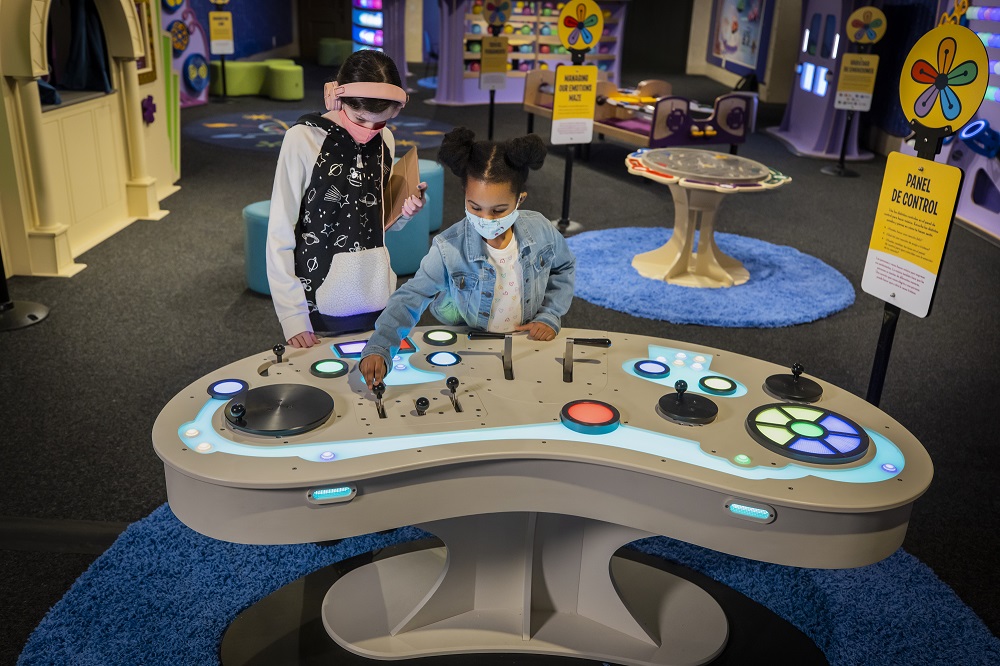
2. Emotions at Play with Pixar’s ‘Inside Out’
We’ve been looking forward to this collaboration between the museum and Pixar Animation Studios since the project was announced in September 2019. At last, we have a chance to visit the world premiere of Emotions at Play with Pixar’s “Inside Out.” The Oscar-winning animated film delves into 11-year-old Riley’s struggle with her emotions: Joy, Fear, Anger, Disgust and Sadness. The interactive exhibit allows kids to better express and understand their emotions, just like Riley.
Operate the Control Panel to make sounds and music that express feelings. At Dream Productions, kids will perform a puppet show that explores emotions through imaginative play. Family challenges include the Managing Our Emotions Maze and the Train of Thought, which might test emotions like frustration or pride at success.
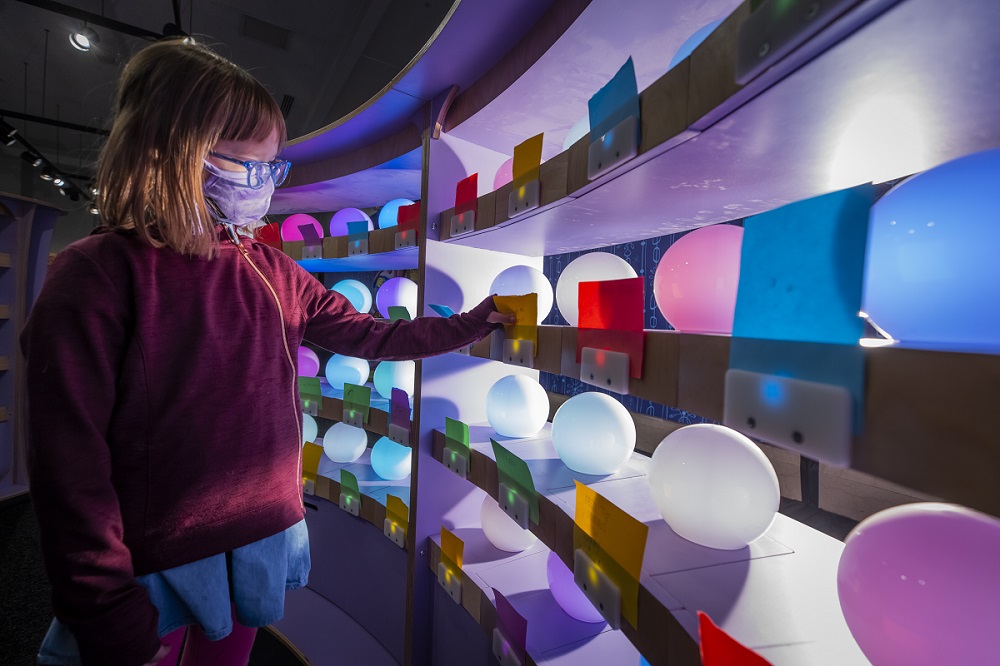
At the Longterm Memory station, kids can note their emotions in words or sketches on paper, choosing the color that best represents their feelings. Those familiar with the movie know Joy is yellow, Disgust is green, Anger is red, Sadness is blue and Fear is purple. The paper goes into a slot and the glowing orb changes into the matching emotional color.
The bright and colorful exhibit offers interest for kids from toddlers to their older siblings. Emotions at Play continues at the museum through Jan. 9, when it will begin its tour to museums and libraries across the country.
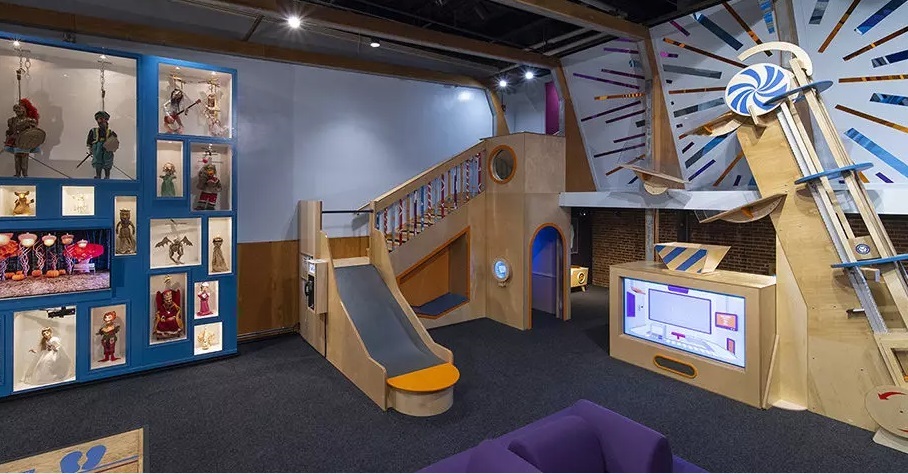
3. The Kindness Gallery
The new Kindness Gallery takes over the former Attic exhibit space. The exhibit draws from the lessons of Fred Rogers to help kids send messages of kindness.
Create a virtual gift box at the Care Package Factory where kids can select products – a teddy bear, flowers, cake – to go into their kindness box, then choose the recipient, like a hospital or school. The computer reads the details and “loads” a cardboard box. Kids toss the box in the hopper or crank a mechanical lift. Then, watch the computer screen that tracks the package to its destination. It’s a great exercise in empathy and a way to consider helping others in real life.
A vintage-style hi-fi includes a Strategy Song Record Player that kids can use to play record-like discs. A pair of old-school wall telephones give kids a chance to call each other to offer messages of kindness. Kids also can write a note or draw a picture that can be pressed into a Kindness Token to keep or share.
And we’re happy to report that the Gravity Room and Virtual Puppets will continue to share the space.
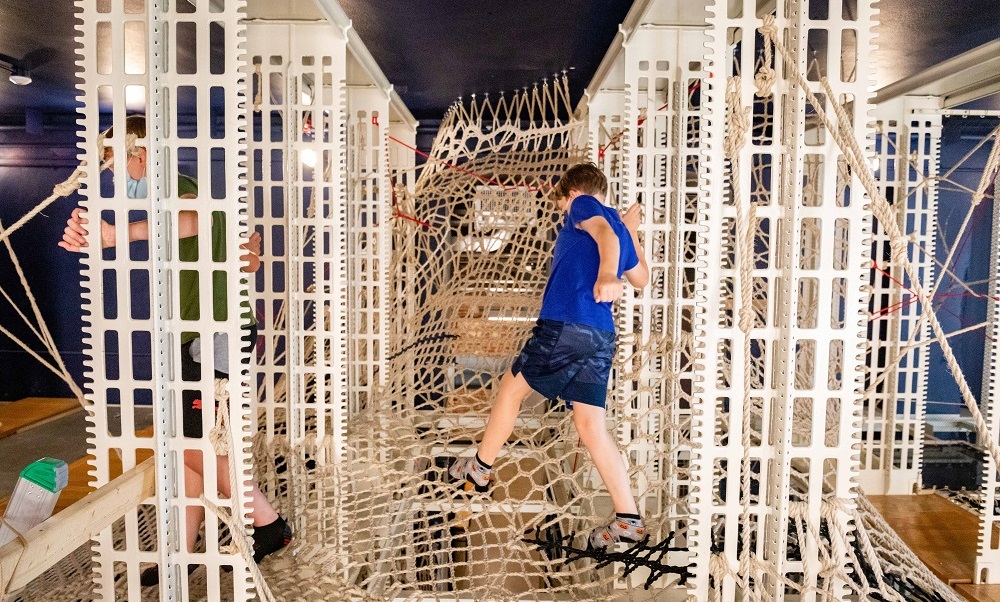
4. Gymlacium
At MuseumLab, the intricately detailed Gymlacium takes over The Stacks in the former Carnegie Library space. Artist Manca Ahlin used traditional Slovenian bobbin lace techniques to build her three-story, three-dimensional sculpture within the steel bookshelves. Enter the installation over a bridge, then explore as you wish through tunnels, up rope ladders and over hillocks. Ready for a break? Take a relaxing breather on a hammock and gaze up through the woven layers.
When Ahlin was quarantined in Pittsburgh during Covid, she spent the extra time weaving a lacy Coronavirus into her sculpture. See if you can spot it.
No shoes are allowed, so be sure to bring a pair of socks for each adventurer. Space is limited. Check on availability when you arrive. You can join a waitlist to save a space for your kids.
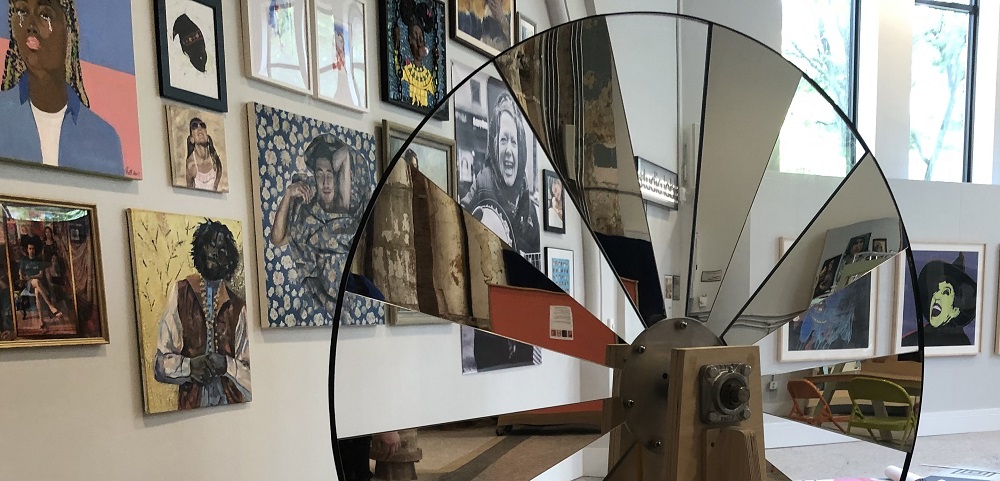
5. Face Value
The new Face Value exhibit looks at portraiture with a regional focus. Pittsburgh-area artists were invited to contribute portrait pieces, creating a rich display of styles and techniques. Look for several portraits by Andy Warhol, including “The Witch,” in which Margaret Hamilton posed as her character from “The Wizard of Oz.”
Hands-on activities include a selfie station and a silhouette lighting space where kids can trace a profile from the shadow. Other portrait sketching techniques are explored as well.

6. Your membership
All membership accounts that were active on March 14, 2020, will resume on June 12. A new feature is a digital membership card for every cardholder on your account. The digital card is available through a free eMembership Card app from the Apple App Store or Android App Store. Learn about the benefits of membership and the available levels here.
7. The museum café
No food service will be available at this time, but you can pack a lunch to eat in the museum café, where tables accommodate social distancing. Or take your snack outside to the tables and benches in Buhl Community Park. Only bottled water is allowed in the exhibit areas. None of the water fountains are operating, but you can refill water bottles at filling stations.
8. Covid safety
As part of new Covid safety protocols, all visitors will pause for a temperature check before entering the museum. If anyone in your group registers 100.4 degrees or higher, the group will be denied entrance. Masks are required for all visitors ages 2 and older. A touchless admissions system has been installed in the lobby, where ticket purchase receipts and electronic admission cards can be scanned. You’ll also find touchless hand sanitizer stations throughout the building.
9. Free stuff – all the time
Every day of the week, families can experience interactive exhibits at the museums’ outdoor campus.
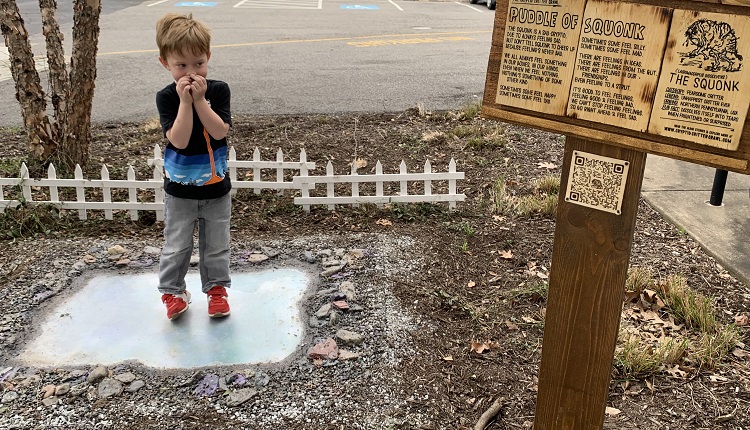
The “Cryptid Critter Crawl,” created by Pittsburgh artist Owen Lowery, explores legendary creatures. The eight interactive installations include each cryptid’s backstory, geographic origin, legend and a fun fact. Pick up a map or get the complete guide on the mobile website, which includes audio tales, a map and supplemental materials like coloring pages.
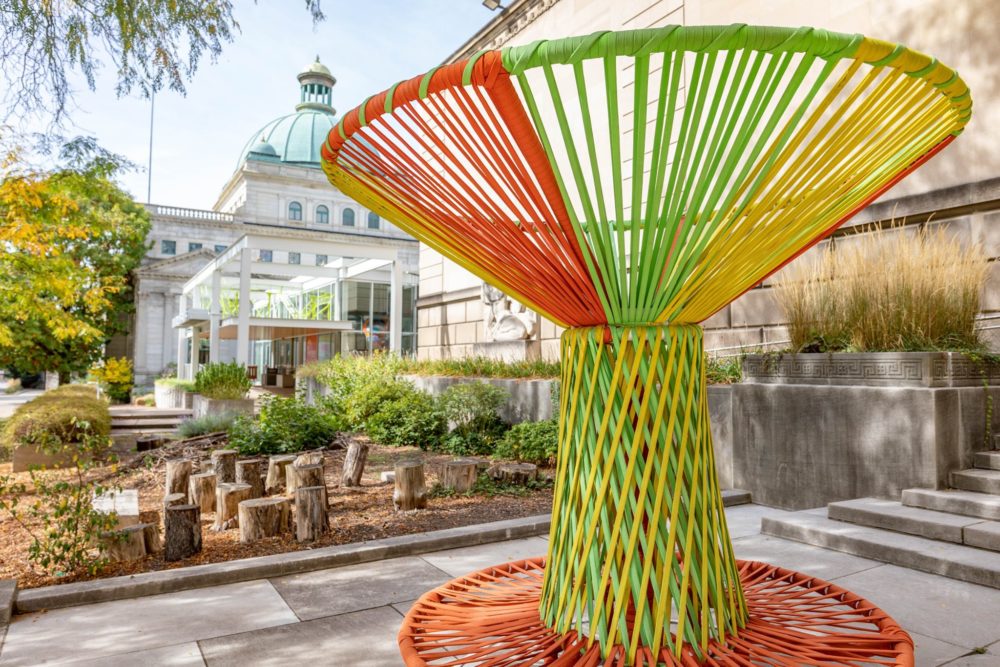
Kids can literally immerse themselves in larger-than-life-size, 3-D sculptures of Los Trompos, which translates to “the spinning tops.” Construction is made from bright, colorful fabric, woven by Mexican artisans who follow a traditional pattern. The interaction of the sculptures and viewers makes the art experience complete, say artists Héctor Esrawe and Ignacio Cadena. Kids can spin the giant tops and jump aboard for a dizzy ride. Los Trompos, on loan from the Pittsburgh Cultural Trust, are located in front of the Children’s Museum.
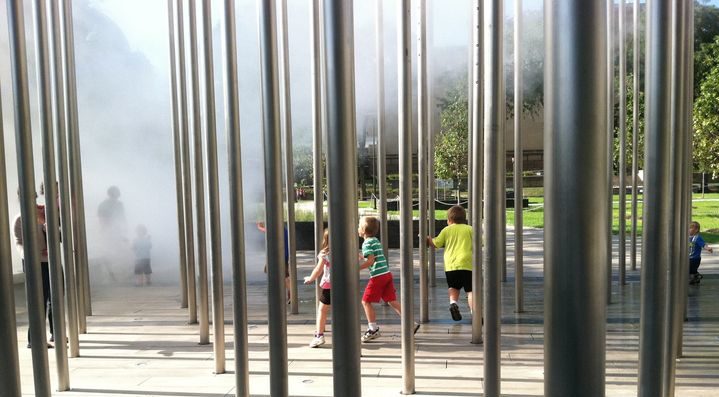
Kids love running through and around the refreshing mist of “Cloud Arbor,” built by sculptor Ned Kahn. The small forest of 64 shining poles reaches 32 feet in the air. Prepare for squeals when a mist begins to seep from the top of the poles. The fine spray continues to form a cloud-like fog, which shifts and evolves as the breeze moves it. When the nozzles atop the poles stop sending out the mist, the cloud evaporates into the air. All that’s left are screaming, whooping kids, who run and skip awaiting the next cloud’s appearance.